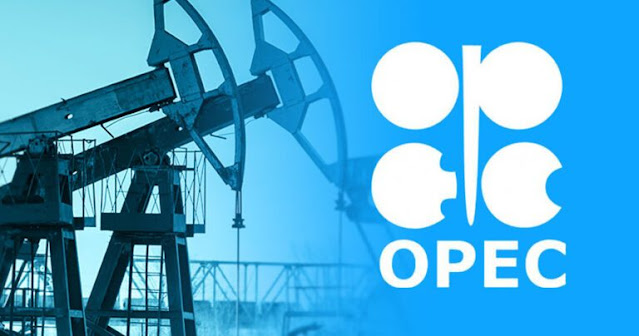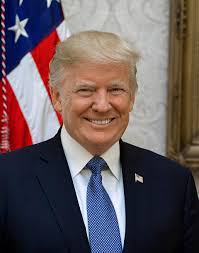The global oil market is once again at a crossroads, grappling with the delicate balance between supply, demand, and geopolitical influences. Recent developments within the Organization of the Petroleum Exporting Countries (OPEC) and its extended alliance, OPEC+, have reignited concerns about the trajectory of global oil prices. Reports indicate that OPEC and its allies are contemplating increasing oil production, a move that could exacerbate the ongoing decline in oil prices, posing significant challenges for oil-dependent economies like Nigeria. This decision comes at a time when global demand forecasts are faltering, and non-OPEC producers are ramping up output, further complicating the market landscape.
OPEC’s Strategic Shift: Unwinding Production Cuts
OPEC+, a coalition that includes major oil producers like Saudi Arabia, Russia, and other key players, has been navigating turbulent waters in its efforts to stabilize global oil markets. Since the onset of the COVID-19 pandemic in 2020, the group implemented significant production cuts to counter plummeting demand and stabilize prices. These cuts, which at their peak reduced output by nearly 10 million barrels per day (bpd), were instrumental in preventing a complete collapse of the oil market during the height of global lockdowns. However, as economies recovered and demand rebounded, OPEC+ gradually began unwinding these restrictions.
Recent announcements suggest that OPEC+ is planning to increase production by approximately 180,000 bpd starting in December 2024. This decision follows a period of voluntary output reductions by key members, notably Saudi Arabia, which slashed its production by 1 million bpd to prop up prices. The group’s Joint Ministerial Monitoring Committee (JMMC) has signaled that these voluntary cuts could be phased out over the next 18 months, with the possibility of adjustments based on market conditions. This strategic pivot is driven by the need to regain market share lost to non-OPEC producers, particularly the United States, Canada, and Guyana, which have significantly boosted their output in recent years.
The decision to ramp up supply is not without risks. Brent crude, the global benchmark, has already slid to around $69 per barrel, its lowest level since December 2021, before Russia’s invasion of Ukraine sent prices soaring. Similarly, the West Texas Intermediate (WTI) benchmark has dipped below $70 per barrel, reflecting a bearish outlook in the market. The prospect of additional OPEC+ supply entering an already oversupplied market has fueled fears of further price declines, potentially pushing Brent crude to the $60 per barrel range—a level that could spell trouble for many oil-producing nations.
Global Demand Woes and Market Dynamics
The decision to increase production comes against a backdrop of weakening global oil demand, particularly in key markets like China. As the world’s second-largest economy and a major driver of global oil consumption, China’s economic slowdown has sent ripples through the energy sector. Recent data points to a contraction in Chinese manufacturing activity, with the Caixin Manufacturing Purchasing Managers’ Index (PMI) dropping to 49.3 in August 2024, signaling a contraction in industrial output. This slowdown has dampened oil demand, as China’s refining capacity and fuel consumption have not kept pace with earlier projections.
Moreover, the global transition to cleaner energy sources is beginning to impact long-term oil demand forecasts. While oil remains a critical component of the global energy mix, the rise of electric vehicles (EVs), renewable energy, and energy efficiency measures is gradually reducing reliance on fossil fuels in some regions. The International Energy Agency (IEA) has revised its global oil demand growth forecast for 2024 downward to 900,000 bpd, a significant reduction from earlier estimates of 1.2 million bpd. This downward revision reflects not only economic challenges in China but also sluggish demand in Europe and other developed markets.
On the supply side, non-OPEC producers are adding to the glut. The United States, now the world’s largest oil producer, has seen its shale oil industry thrive, with production exceeding 13 million bpd in 2024. Similarly, Canada’s oil sands and Guyana’s offshore fields have contributed to a surge in non-OPEC supply, estimated to grow by 1.5 million bpd this year. This influx of oil from outside the OPEC+ alliance has eroded the group’s market share, prompting its leaders to reconsider their strategy of production restraint.
Nigeria’s Precarious Position
For Nigeria, a key OPEC member and Africa’s largest oil producer, the prospect of lower oil prices is particularly alarming. The country relies heavily on crude oil exports, which account for over 90% of its foreign exchange earnings and approximately 70% of government revenue. With Brent crude prices hovering around $69 per barrel, Nigeria is already grappling with fiscal challenges, as its 2024 budget was predicated on an oil price benchmark of $77.96 per barrel and a production target of 1.78 million bpd.
However, Nigeria’s oil production has consistently fallen short of its OPEC quota of 1.5 million bpd, averaging around 1.3 million bpd in recent months. This shortfall is attributed to a combination of factors, including aging infrastructure, pipeline vandalism, oil theft, and underinvestment in the upstream sector. The Nigerian National Petroleum Company Limited (NNPCL) has struggled to address these issues, despite efforts to attract foreign investment and improve security in the Niger Delta, the heart of the country’s oil industry.
The potential for further price declines could exacerbate Nigeria’s economic woes. A drop to $60 per barrel would strain the government’s ability to fund critical infrastructure projects, social programs, and debt servicing. Nigeria’s external debt stood at $42.1 billion as of mid-2024, and lower oil revenues could force the government to borrow more or implement austerity measures, both of which carry significant economic and political risks. Moreover, the weakening naira, which has lost over 70% of its value against the dollar since 2023, adds further pressure on an economy already grappling with inflation and unemployment.
OPEC’s Internal Dynamics and Challenges
Within OPEC+, the decision to increase production is not universally supported. Saudi Arabia, the group’s de facto leader, has shouldered the bulk of the voluntary cuts, reducing its output to around 9 million bpd, well below its capacity of 12 million bpd. The kingdom’s decision to unwind these cuts is driven by a desire to maintain its market share and generate revenue to fund its ambitious Vision 2030 economic diversification plan. However, Saudi Arabia’s fiscal breakeven price—the oil price needed to balance its budget—is estimated to be around $80 per barrel, significantly higher than current market levels. A sustained period of low prices could strain the kingdom’s finances, potentially forcing it to scale back its investment in non-oil sectors.
Other OPEC+ members, such as the United Arab Emirates (UAE) and Iraq, have also expressed a desire to increase production to capitalize on their spare capacity. The UAE, in particular, has invested heavily in expanding its output capacity to 5 million bpd by 2027, and it is eager to deploy this capacity to gain market share. However, these ambitions have occasionally led to tensions within the group, as some members struggle to comply with their allocated quotas. Iraq, for instance, has consistently overproduced, prompting calls for stricter adherence to OPEC+ agreements.
Russia, a key non-OPEC member of the alliance, faces its own set of challenges. Western sanctions imposed in response to its invasion of Ukraine have limited its ability to export oil to traditional markets in Europe. While Russia has redirected much of its crude to Asia, particularly China and India, discounted prices and logistical challenges have reduced its revenue. Increasing production could help offset these losses, but it also risks further depressing global prices, creating a delicate balancing act for Moscow.
Geopolitical and Market Uncertainties
The oil market’s trajectory is further complicated by geopolitical uncertainties. The ongoing conflict in the Middle East, particularly between Israel and Iran-backed groups, poses a risk of supply disruptions. While these tensions have not yet significantly impacted oil production, any escalation could lead to temporary price spikes. Conversely, a resolution to these conflicts or an easing of sanctions on Iran could bring additional supply to the market, further pressuring prices.
The U.S. presidential election in November 2024 also looms large over the oil market. A change in administration could lead to shifts in energy policy, including potential changes to sanctions on Iran and Venezuela, both of which are OPEC members with significant untapped production capacity. A relaxation of sanctions could allow these countries to ramp up exports, adding to the global supply glut.
Implications for the Global Energy Transition
The current oil market dynamics also have broader implications for the global energy transition. As prices decline, the economic incentive for investing in renewable energy and low-carbon technologies may weaken, particularly in developing countries that rely on fossil fuel revenues. However, the long-term trend toward decarbonization remains intact, driven by international climate commitments and technological advancements. For oil-producing nations like Nigeria, this underscores the urgency of diversifying their economies to reduce dependence on volatile oil revenues.
Nigeria has made some progress in this regard, with initiatives to boost agriculture, technology, and manufacturing. However, these efforts have been hampered by structural challenges, including corruption, inadequate infrastructure, and policy inconsistencies. The government’s recent push to develop the gas sector, including projects like the Ajaokuta-Kaduna-Kano (AKK) gas pipeline, could provide an alternative revenue stream, as global demand for natural gas is expected to remain robust in the near term.
Potential Scenarios and Outlook
Looking ahead, the oil market faces several potential scenarios. In the best-case scenario, global demand could rebound more strongly than expected, driven by economic recovery in China or stimulus measures in major economies. This could absorb the additional OPEC+ supply and stabilize prices at a level that supports producing countries’ budgets. However, this outcome appears unlikely given current economic indicators.
A more probable scenario is continued downward pressure on prices, particularly if OPEC+ proceeds with its planned supply increases and non-OPEC production continues to grow. Analysts warn that Brent crude could fall to $60 per barrel or lower by mid-2025 if demand remains subdued. For Nigeria, this would necessitate painful fiscal adjustments, including cuts to public spending and potential increases in domestic fuel prices, which could spark social unrest.
In the worst-case scenario, a combination of oversupply, weak demand, and geopolitical shocks could push prices into the $50 per barrel range, a level not seen since the early days of the pandemic. Such a scenario would have catastrophic consequences for oil-dependent economies and could destabilize global financial markets.
Conclusion
The decision by OPEC+ to boost oil production reflects a strategic gamble to regain market share in an increasingly competitive landscape. However, this move comes at a time of significant uncertainty, with weak global demand, rising non-OPEC supply, and geopolitical risks creating a perfect storm for oil prices. For Nigeria, the stakes are particularly high, as lower prices threaten to undermine an already fragile economy. As the government grapples with these challenges, the need for structural reforms and economic diversification has never been more urgent.
The global oil market remains a complex and volatile arena, shaped by the interplay of economic, political, and environmental factors. While OPEC+’s actions will play a critical role in determining short-term price movements, the long-term outlook for oil depends on broader trends, including the pace of the energy transition and the resilience of global economies. For now, stakeholders in Nigeria and beyond will be closely monitoring the market, bracing for the possibility of further price declines and their far-reaching consequences.






